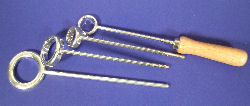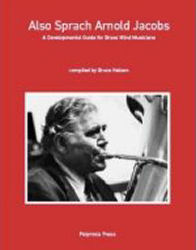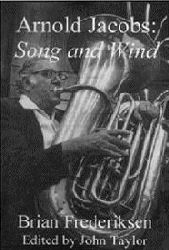Description
NORMAN SCHWEIKERT
Norman Schweikert was born in 1937 in Los Angeles. In 1955 Norman auditioned for the Rochester Philharmonic Orchestra in Music Director Erich Leinsdorf’s hotel room in Los Angeles and won the fourth horn position. He remained with the orchestra until 1966 with three years out for military service with the United States Military Academy Band at West Point. He earned a BM degree and Performer’s Certificate in 1961 from the Eastman School of Music while playing in the Philharmonic, studying with Morris Secon and Verne Reynolds. Norman played second horn to Reynolds for two years and also enjoyed playing in the Eastman Wind Ensemble with Frederick Fennell, including taking part in more than a dozen recordings. Norman spent five years as Instructor of Horn at the Interlochen Arts Academy and a member of the Interlochen Arts Quintet (woodwind). In June 1971 he joined the Chicago Symphony Orchestra as assistant principal horn. He moved to second horn in 1975, where he remained until retiring in 1997. In 1977 Norman, Dale Clevenger, Richard Oldberg, and Tom Howell performed and recorded the Schumann Konzertstück in Chicago. Norman also taught horn at Northwestern University from 1973 to 1998.
Dale Clevenger – Norm Schweikert, in his usual absolute thorough research, has given the horn and music world a marvelous history of the German horn players, the Reiter brothers (1886) and forward. It is a great addition for the history of the horn in America and in general. I recommend this for all interested in horn players.
Gunther Schuller When I was a teen-age horn student I often heard about a legendary horn player, now forgotten and unremembered, named Xaver Reiter. For over half a century (1870’s-1930s) Reiter was consistently, unequivocally, declared “the greatest horn player” of the time. Norman Schweikert has done the most amazingly comprehensive research, bringing Reiter vividly back to life. A must-read for anyone interested in our earlier musical history and culture.
Hans Pizka – Norman Schweikert’s book about the Reiter Brothers is an important contribution to the history of the horn. It paints a realistic picture about the social and artistic situation of horn players between 1870 and 1930 while paying tribute to two very successful pioneers of the horn. Norman’s extensive research resulted in many unknown details, providing an incredible multitude of information about players, conductors and compositions of that period. I am very proud, that Norman invited me to cooperate in the research, which I did with great pleasure. The book should be a must-have for all musicians interested in more than just the instrument. Thank you Norman!
Leonard Slatkin – A wonderful read, telling a story that could only have been written by an insider. This is a most enjoyable book and should appeal not only to musicians but anyone interested in the history of a remarkable family.
Table of Contents
About the Author
Preface and Acknowledgments
List of Illustrations
Chapter 1 – Haag
Chapter 2 – The Reiter Family
Chapter 3 – The Early Lives of Josef and Xaver
Chapter 4 – Munich, Sondershausen, Hannover and London
Chapter 5 – Bayreuth, Munich and Karlsruhe
Chapter 6 – Bayreuth, Boston and Munich
Chapter 7 – Boston and New York
Chapter 8 – New York and Baltimore
Chapter 9 – The New York Symphony Orchestra and San Francisco, 1893-98
Chapter 10 – The Metropolitan Opera, Cincinnati, Philadelphia,and Josef’s Death, 1898-1909
Chapter 11 – The New York Philharmonic Orchestra, 1909-23
Chapter 12 – The State Symphony Orchestra, 1923-25
Chapter 13 – German Grand Opera Company, 1929-31
Chapter 14 – Final Years, 1932-38
Chapter 15 – The Wives and Children of Josef and Xaver, and Memories of Xaver, Josephine and Valkyrie Rock Farm
Appendix 1 – Music Composed or Arranged by Josef Reiter
Appendix 2 – Music Composed by Xaver Reiter
Appendix 3 – Printed and Published Music in Josef Reiter’s Collection
Appendix 4 – Christina’s Side of the Reiter Family
Appendix 5 – Addendum
Bibliography
Index
Reprinted From The Horn Call, Vol XLIII, No 2, February 2013, p.77
The Horns of Valhalla: Saga of the Reiter Brothers by Norman Schweikert. Windsong Press, PO Box 146, Gurnee IL 60031-0146 USA; windsongpress.com. ISBN 978-0-615-64436-3, 2012, $24.95
It is rare for horn players of the more distant past to leave much written record of their personal and musical lives. In the 19th century, we have Charles Limouzins biography of the long-forgotten Eugene Vivier (Eugene Vivier, La vie et les aventures d’un cornisie), for whom Rossini wrote his Prelude, Theme and Variations. All the more remarkable is Norman Schweikert’s fascinating reconstruction of the lives of the brothers Franz Xaver (1856-1938) and Josef (1848-1909) Reiter, pupils of Franz Strauss (horn playing father of Richard Strauss) and prominent figures in the orchestral worlds of 19th- and 20th– century Germany (both were players in the Bayreuth Festival Orchestra) and America. Schweikert, former assistant principal and second horn of the Chicago Symphony, has pursued an interest in the history of horn playing in the United States ever since his student days at Eastman, and this is the first book length result of his years of research.
Xaver Reiter, in particular, led a colorful life as principal horn of a number of American orchestras, including the Boston Symphony, New York Philharmonic (when Mahler made his conducting debut), and Metropolitan Opera. Schweikert reprints two letters from Mahler to Xaver and includes Alma Mahler’s amusing story of Xaver visiting the Mahler residence in 19l0 to play the Brahms Horn Trio with a young Hungarian pianist. The pianist was not temperamentally suited to chamber music and stormed off during the second movement, leaving Mahler to play the piano part.
Schweikert has painstakingly mined both a wealth of published sources, including newspaper reviews and music periodicals, and also trolled in orchestral archives, including programs and personnel rosters. But what gives true color to the story of the Reiter brothers in America are Schweikert’s contacts with Reiter family members who provided him access to family archival material (the two letters from Mahler, for example) as well as their personal recollections of Xaver’s life and horn playing career in America. Those contacts also gave him access to a trove of horn music composed or arranged by Josef and Xaver for ensembles of up to eight natural horns. Indeed, early precursors of the LA Horn Club and horn ensemb1es at IHS gatherings can be found in the Hallali Club and the Echo Club, offshoots of a horn club that Josef had founded in Munich and for which he composed numerous fanfares (Might we hope for Schweikert to talk about the Reiter brothers at an upcoming IHS festival and arrange for some of Josef’s music to be performed? Perhaps these pieces could be published so we all could have opportunities to play them.)
The book is filled with amusing family anecdotes and recollections of the horn playing brothers at home and on the stage. Perhaps none better captures the disciplined practice that is a universal part of professional horn playing than the recollection of Xaver’s son, Fred, of his father’s daily routine:
“Papa always kept his horns in the basement and usually, in the afternoon, after an hour’s nap, he would go to the basement and get out the horn to practice. I used to be so disappointed! I wanted him to play tunes and hear how nicely he played, but he would just play scales, up and down, up and down. It was as though he did not want to give anything for free – any real music – and even as a kid I was always so disappointed.”
For those interested in the history of horn playing in America and its points of contact with a horn playing tradition in Germany, Schweikert’s book provides a helpful introduction. At times, I wished for the story of the Reiter brothers to be cast in a somewhat broader cultural context: how the American orchestras in which the Reiter brothers performed were developing as cultural institutions, filled in those days with many European musicians seeking new lives and better fortunes, and how those musicians passed on their skills to a home-grown pool of talent. I suspect that Schweikert has collected materials and done much research that wi1l help to tell that larger story and it is to be hoped that he will continue to share with us the results of his life-long study of the history of horn playing in America.
Tom Reichert, Berkeley Symphony, Piedmont, California
Review: The Horns of Valhalla – Saga of the Reiter Brothers by Norman Schweikert December 6, 2012
I noted that a new book was out by Norman Schweikert on the topic of the Reiter brothers. I have now had my copy of this book for several weeks and in short, for anyone interested in horn history this is a must-have publication.
The sales description from the publisher WindSong Press gives these introductory details to the topic.
“The Reiter brothers, Josef and Xaver, were true heroes of the horn, having filled solo positions in the Munich Opera, other European orchestras in Sondershausen, Hannover, Karlsruhe and the Bayreuth Festival, before coming to America in the latter half of the 1880s. Here they were solo horns of the Boston Symphony Orchestra, the Metropolitan Opera, the New York Symphony with Damrosch, Scheel’s Orchestra of San Francisco, the Cincinnati Symphony Orchestra, the first season of the Philadelphia Orchestra, and finally the New York Philharmonic with Gustav Mahler and Josef Stransky. They appeared as soloists with several of these orchestras. The older brother, Josef, returned to Munich and left us rather early in 1909, but Xaver, with his hair down to his shoulders, lived on in Valhalla, New York, until 1938, a real character to the end of his life!”
The publication is over 200 pages long and is full of details on the careers of these important figures of the horn world. In the preface Schweikert explains that as a young professional hornist
“My plan was to write a history of professional horn players in the United States from Colonial times to the present. However, as the years went by and I became busy with my performing and teaching career, I did not pursue research on American hornists with quite the same vigor as before. After joining the Chicago Symphony in 1971, my interests expanded to collecting information on all American symphony and opera instrumentalists….”
Moving ahead to 1985, Schweikert explains that he was contacted by Hans Pizka who was “asking for information about various horn players who had careers in the United States, including the Reiters.” This led to a second look at the information he had on the Reiters which soon led to extensive contact with the family including four of the children of Xaver.
As a result this new book, published in 2012, is full of interesting information based on interviews and extensive examination of memorabilia including “photograph albums, newspaper clippings, documents, and all of Josef’s surviving original compositions.” Picking just one quote to highlight from the book is difficult, but for some flavor I would offer this from page 106, from a 1922 concert review of a performance of the Brahms Trio in The New York Times.
“The tone of the French horn when it is so finely played as it was by Mr. Reiter last evening mingles enchantingly with those of the other instruments and imparts a color and a character of great beauty; a color and a character for which Brahms’s music was most sympathetically conceived, not only in the first movement and the adagio, but equally in a more brilliant manner in the scherzo and the finale. Mr. Reiter’s feeling for the right balance of tone was unfailing. It is not every horn player who produces so beautiful a piano and pianissimo, who phrases so musically, who obtains so convincing a portamento.”
The publication is well organized and a great read! Everything is documented extremely well, and clearly the Reiters were colorful and memorable people of our horn world. The book itself is bound and printed beautifully and is frankly a huge bargain at the price of $24.95 compared to all the effort and care taken to bring it to print.
Again, congratulations to Norman Schweikert and WindSong press for this very remarkable horn publication.





